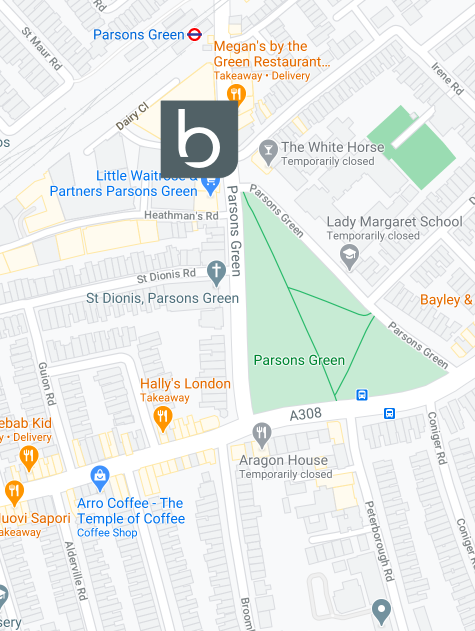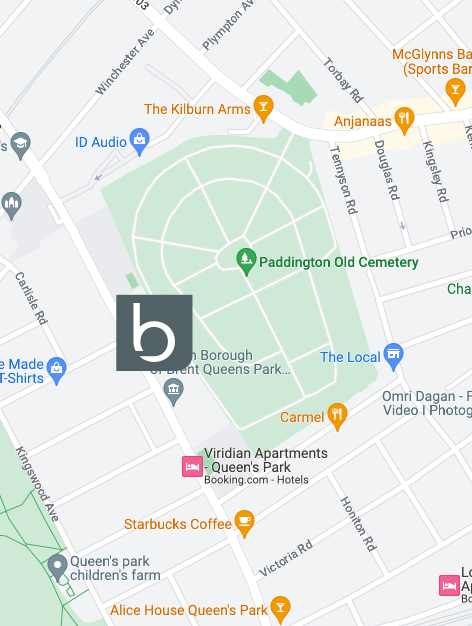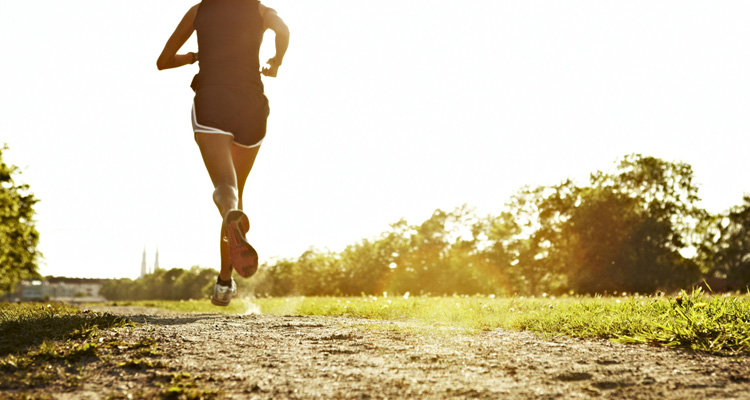
Close
Enquiry
Please see contact information below or complete the form and we will get in touch with you.

Parsons Green
3rd Floor Brigade House
8 Parsons Green
London
SW6 4TN

Queen's Park
2nd Floor
105-109 Salusbury Road
London
NW6 6RG

Jesse's House
8-10 Heathmans Road
Parsons Green
London
SW6 4TJ
The Art of Running – Improve Performance and Reduce Injury

Over 2 million years ago, the homo erectus became the earliest species in the human lineage to set itself apart by its capacity for long distance running. We are designed to run and huge health benefits accompany this simple and natural form of exercise. Running is also one of the easiest and most affordable activities to fit into a busy schedule.
Starting a running program can be a significant physical challenge. However if you train intelligently, develop a style that works for you, and listen to your body, you’ll enjoy running at maximum efficiency with minimal risk of injury. You will also accumulate multiple health benefits with every stride. Imagine the freedom to run whenever you like, wherever you are!
What health benefits are associated with running?
Running is demanding because it’s just you and your body. There is no pool to float in, no pedals to make you go faster and no seat to support you as you coast along. But when running it is these different demands on the body that deliver such significant health benefits. Not only that, running provides the opportunity to enjoy the fresh outdoor air and connect with nature. Factors that are linked with increased physical and mental wellbeing.
Running improves your cardiovascular health by strengthening your heart and arteries, reducing bad cholesterol and improving blood supply to the whole body. Running has been shown to reduce the likelihood of many other diseases including various types of cancer, osteoporosis and diabetes. Running might be the last thing you want to do when you’re feeling down, but research has found it can be very beneficial to your mood. Stress can give rise to a number of different physical and mental issues, including tension headaches, moodiness, and problems with appetite and sleep. Fortunately running helps deplete stress hormones and releases mood enhancing chemicals (endorphins) – factors that directly affect your level of stress. And most importantly running makes you feel great. After just a few minutes of running, your brain starts releasing “feel good” hormones that improve your mood naturally. Studies have shown that just 30 minutes of walking on a treadmill can almost instantly lift the mood of someone suffering with a depressive disorder. And, although it may seem counter intuitive, regular exercise, including running, has been shown to reduce fatigue and can boost energy levels.
And finally, running seems to enhance overall brain function. Studies show that regular exercise improves memory and learning, and prevents or delays loss of cognitive function with aging.
Common Running Myths
Myth #1: Running is bad for your joints, especially your knees
Research has shown that joint damage is not caused by running:
- MRI studies do not show anatomical lesions in average runners’ knees post-marathon
- Studies do not find more cartilage degeneration (arthroses) in runners than in non-runners
In fact, repetitive and progressive stress on joint cartilage actually contributes to its thickening and strengthening. This means that running can actually improve knee health. Bones weaken as a result of the natural ageing process and while running does increase the stress on your bones, it is this stress that activates your body to strengthen the bone. This is your body preparing the bone to face that amount of stress in the future.
Myth #2: Runners have a high rate of injury
Runners do have one of the highest rates of injury when compared to other sports. Some studies show that runners can have as high as a 70% chance of injury in a calendar year. However if we go into more detail, the majority of these runners are recreational runners and the injuries they get are overuse injuries. Put simply, if you run without a correct training program then your body will not adapt to the positive mechanical stresses and you may experience injury.
So be careful. There are many great benefits to running but there is also the risk of injury if you start incorrectly or acquire bad running habits.
Beyond Health — 4 Essential Elements to Injury Prevention in Running
1. Foundation level strength and mobility
You have to be fit for your sport. Having a minimum level of strength, control and mobility allows you to move freely and run with optimum technique. This promotes good movement patterns for correct running biomechanics and allow you to absorb and recover from external stresses on the body when running.
2. Running technique
Running is a skill and requires practice to improve. Efficient running technique reduces your energy cost, lowers stress on the body and also improves your running economy and performance. It’s easy to find the personal technique that reduces the risk of injury and improves your running efficiency: all you need is a running technique coach. Studies3 show that you can improve your running efficiency by:
- Landing with your foot under the body, close to your centre of gravity
- Have a foot strike towards the forefoot
- Decrease time of contact with the ground
- Decrease your vertical displacement
- Decrease useless muscle contractions, e.g proper alignment during the weight bearing phase
- Have a freely chosen stride frequency around 180 strides/min

3. Training approach
Get a progressive training program that matches your goals and aspirations. Over time, as you increase training volume or intensity, or if you change your running environment, you need to adapt your training approach accordingly. This will help you avoid injury, as these change points can coincide with injury if progressive adjustments are not made. Listen to your body and understand where it is right now.
4. Appropriate running shoes
Running shoes are a favourite topic of discussion and debate with runners. The most recent research shows that shoes can have a significant impact on running economy and performance. However, can they also impact the injury rate? To date the research does not show a positive relationship between shoes and running injuries. What we do know about shoes is that comfort is important to protect and promote natural motion. Depending on your goals or aspirations, there is an ideal shoe for you – one that will promote a more efficient running style, improve your running economy and consequently improve your performance.
Recently, a sizeable barefoot running community has emerged. While there can be some benefits to running barefoot, it is a big change with significant implications for the body. If you are considering running barefoot, we recommend you seek professional advice first. Also bear in mind that summer might be a better time to make this transition.
Ready to put on your running shoes?
Beyond Health — Guiding Principles to Running
- Consult a physiotherapist and/or running coach before you begin your programme. Have an expert evaluate your baseline strength, control and mobility and address any weaknesses or “faults” in your foundation. This will allow them to provide you with specific targeted exercise prior to beginning your programme.
- Do a running assessment. Have your technique evaluated by a physiotherapist and/or running coach to gain advice and guidance on the optimum running style for you.
- Develop your own bespoke training approach. Undertake a fitness assessment that will guide the design of the optimum training programme to help you reach your goals and avoid injury.
- Shoes. With hundreds of different shoes to choose from, consult a shoe expert to help identify the right shoe for you.
- Listen to your body as you go. Should you feel any unusual aches and pains that don’t quickly resolve, seek advice and intervention from experts at the earliest opportunity.
The Beyond Health Running Clinic – runBeyond
runBeyond incorporates the latest in running science to help you develop and enhance your technique.
- We help injured runners get back into action by providing an accurate diagnosis and treatment based on current research, including biomechanical assessment.
- We conduct a gait and biomechanical assessment and provide guidance on running technique and training, to help runners become more efficient.
- We provide physiological assessments (lactate testing) and bespoke training programmes to optimize training and take people beyond their current running status.
runBeyond also offers specialist sessions (moveBeyond, drills and skills sessions) and education seminars to help runners keep up to date with current running trends and the related evidence-based science.
References:
- Bramble et Lieberman, Department of Anthropology, Harvard University
- (2012-Hansen, 2010-VanGinckel, 2009-Boocock, 2008(P)-Lamontagne, 2008-Chakravarty, 2008-Krampla, 2008-Stahi, 2005-Kersting, 2007(L)-Price, 2007-Baumgarten, 2007-Hanna, 2006-Schmitt, 2006-O’Kane, 2006-Shakoor, 2006-Cymet, 2006-Kessler, 2006-Weidekamm, 2005-Weidekamm, 2005- Hohmann, 2004-Shrier, 2004-Eckstein, 2004-Walther, 2004-Hohmann, 2003(CR)-Brosseau, 2003(SR)-Jordan, 2002-Conaghan, 2001-Krampla, 2000- Cheng, 1998-Otterness, 1997-Lequesne, 1996-Cole, 2001 et 1995-Nigg
- (2011-Storen, 2011-Heise, 2011-Halvorsen, 2010-Fletcher, 2009-Pontzer, 2008-Tseh, 2007-Fletcher, 2007-Hasegawa, 2007-Romanov, 2007- Heise, 2006-Conoboy, 2005-Dallam, 2005-Divert, 2004(R)-Saunders, 2004-Arendse, 2004-Saunders, 2004-Hardin, 1996-Anderson, 1994- Morgan, 1992-Martin, 1990-Kaneko, 1989-Cavanagh, 1982-Cavanagh, 1982-Power
- Exercise and the brain: something to chew on, H van Praag – Trends in neurosciences, 2009 – Elsevier)
- The Effect of Footwear on Running Performance and Running Economy in Distance Runners, Joel T. Fuller • Clint R. Bellenger • Dominic Thewlis • Margarita D. Tsiros • Jonathan D. Buckley
- The Running Clinic – Blaise Dubois 2014 (running slide)

